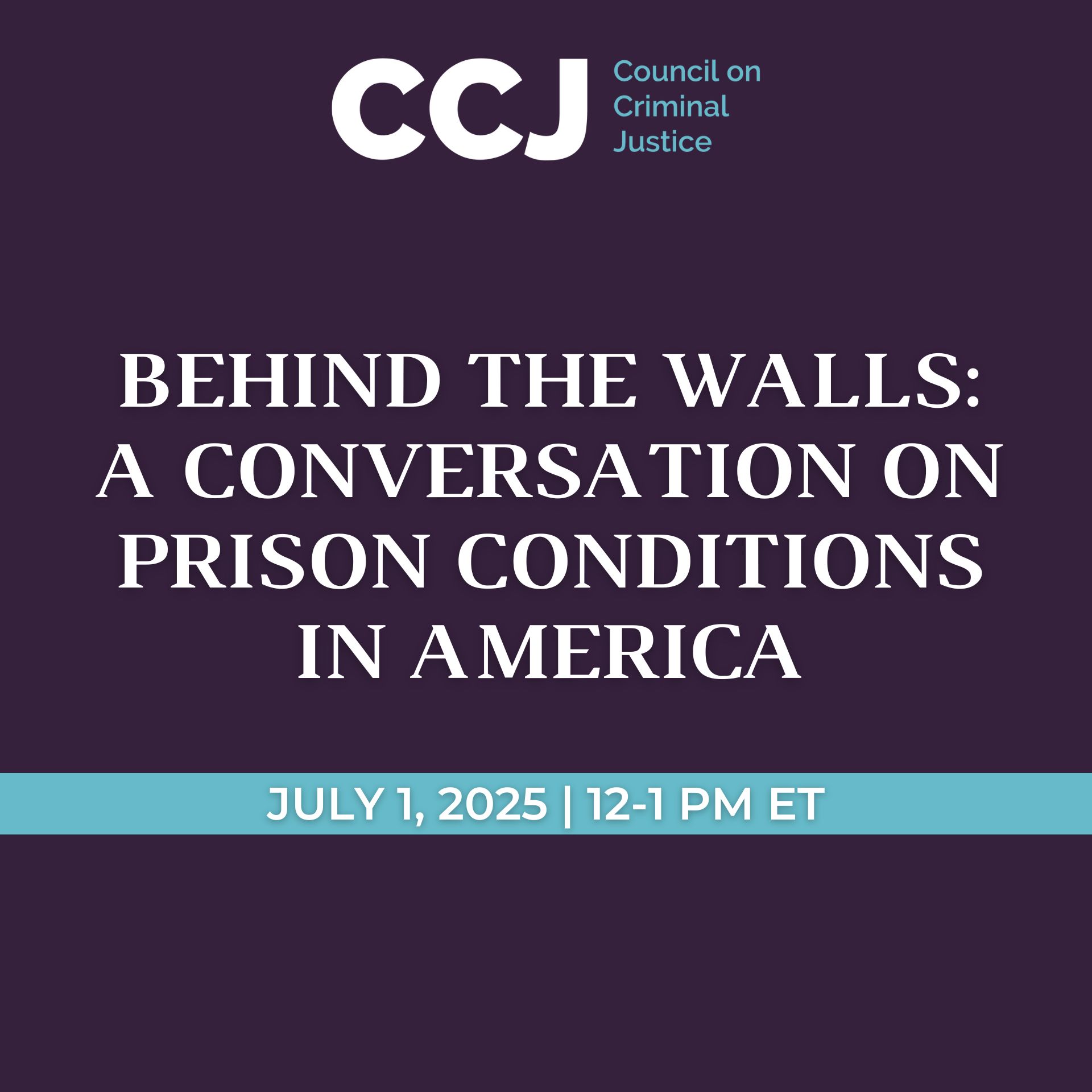Council on Criminal Justice study finds that while racial gaps persist, imprisonment disparities shrunk for all major crime categories from 2000-2016; drop was steepest for drug offenses, women
FOR RELEASE
12:01 a.m. ET, December 3, 2019
Contact: Jenifer Warren
(916) 217-0780
ATLANTA – While significant racial and ethnic disparities remain within the U.S. criminal justice system, a new study by the Council on Criminal Justice (CCJ) shows that those gaps narrowed between 2000 and 2016 across local jail and state prison, probation, and parole populations – some by substantial margins.
Black-white disparities in state imprisonment rates fell across all major crime categories, the study found, and the largest drop was for drug offenses. In 2000, black people were imprisoned for drug crimes at 15 times the rate of whites; that ratio was just under 5-to-1 by 2016, the most recent year for which the relevant data are available. Both the black and white imprisonment rates for property crimes declined, but the decrease for blacks was more than 10 times that for whites—3.2% per year, on average, for blacks compared to an average of 0.2% per year for whites.
Among women, the black-white imprisonment disparity dropped from 6-to-1 to 2-to-1. The trend was fueled by divergent trends: significant growth in imprisonment of white women for violent, property, and drug crimes along with a steep decline in the incarceration of black women for drug offenses. For men, the black-white imprisonment gap fell from about 9-to-1 to just under 6-to-1, a drop driven by a 30% decrease in the black male imprisonment rate.
Hispanic-white disparities, the study found, decreased steadily across all four correctional populations, for men and women. For Hispanics and whites on probation, for example, the data showed no measurable disparity by 2016.
CCJ’s study also analyzed how changes in offending rates as reported by victims and key phases of criminal case processing—arrests, prison admissions, and length of prison stay—affect incarceration rates, and, thus, contribute to or alleviate disparities. The findings show that, for several crimes, decreases in reported offending by blacks contributed most significantly to slowing growth in black imprisonment, followed by reductions in arrest rates. This “front end” impact, however, was partially offset by “back end” forces, specifically, growth in length of prison stays for black people. Prison terms increased across all crime types for blacks, slowing the racial disparity decline.
For example, the black violent crime arrest rate fell by about 2% per year while length of stay in prison increased by about 1.5% per year, resulting in a net drop of 0.8% per year in the black violent crime imprisonment rate. For whites, increases in prison admissions per arrest and length of prison stays led to an average annual increase in the white violent crime imprisonment rate of about 0.8%.
“When you unpack the trends, you find very different stories at the front and back ends of the system,” said the report’s principal author, William J. Sabol, a professor of criminal justice and criminology at Georgia State University and former director of the federal Bureau of Justice Statistics. “The main factors behind the black imprisonment rate changes were the decline in arrest rates for drugs and the decline in reported offending rates for violence, both of which were at least partially offset by increases in expected length of stay in prison.”
The disproportionate representation of people of color in the justice system has received significant attention from researchers, the media, and others concerned that disparities reflect enduring, systemic race-based bias. Academic literature has produced numerous explanations, from racial differences in criminal involvement to prejudice by criminal justice decision makers and the effects of harsher sentencing policies adopted in the 1980s and ‘90s.
“This report moves us closer to understanding more precisely what’s behind racial disparities and to identifying strategies that can increase fairness and equity across the system,” said CCJ’s President & CEO Adam Gelb. “Officials, researchers and advocates should replicate this type of analysis at the state and local levels to better diagnose and tackle what’s working and what’s not in their jurisdictions.”
To view the full report and read perspectives on the study from CCJ board members, please visit counciloncj.org.
About the Council on Criminal Justice
The Council on Criminal Justice (CCJ) is a nonpartisan think tank and invitational membership organization that advances understanding of the criminal justice policy challenges facing the nation and builds consensus for solutions based on facts, evidence, and fundamental principles of justice.



